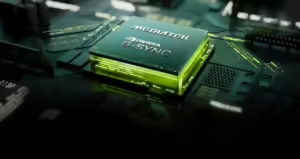Nvidia introduced G-Sync in 2013 as a technology designed to eliminate screen tearing, reduce stuttering, and lower input lag by synchronizing the display’s refresh rate with the GPU’s frame rate. Initially, G-Sync required a dedicated hardware module inside displays, which increased costs for both consumers and monitor manufacturers. Nvidia is now shifting its strategy by partnering with MediaTek to integrate G-Sync capabilities directly into MediaTek’s scaler chips. This partnership eliminates the need for a separate G-Sync module, making G-Sync more accessible and reducing the cost of G-Sync-capable monitors.
The collaboration with MediaTek will allow Nvidia to bring its full suite of G-Sync features, including the latest “G-Sync Pulsar” technology, to a broader range of monitors. The first three monitors set to include these MediaTek scaler chips are the Asus ROG Swift PG27AQNR, Acer Predator XB273U F5, and AOC AGON PRO AG276QSG2. These monitors, which will be available later this year, will feature 27-inch screens, 1440p resolution, and maximum refresh rates of 360 Hz.
In comparison to FreeSync and Adaptive-Sync, G-Sync monitors offer a broader range of refresh rate support, extending from 1 FPS to the monitor’s maximum refresh rate. This is in contrast to FreeSync and Adaptive-Sync technologies, which typically stop functioning below 40 or 48 FPS. Additionally, G-Sync monitors include features like variable overdrive to reduce display ghosting, which may not be available on monitors using FreeSync or Adaptive-Sync.
Nvidia acknowledged the widespread adoption of FreeSync and Adaptive-Sync in 2019 by introducing the G-Sync Compatible certification for FreeSync monitors, recognizing the market shift toward these royalty-free, cost-effective alternatives. As a result, the list of G-Sync Compatible monitors now significantly outnumbers those with traditional G-Sync modules.
Looking ahead, Nvidia is rumored to be working with MediaTek on an Arm-based chip for AI PCs, with a potential launch as early as 2025. There are also reports suggesting that Nvidia is involved in developing a new chip for handheld gaming PCs, continuing its collaboration with MediaTek.

